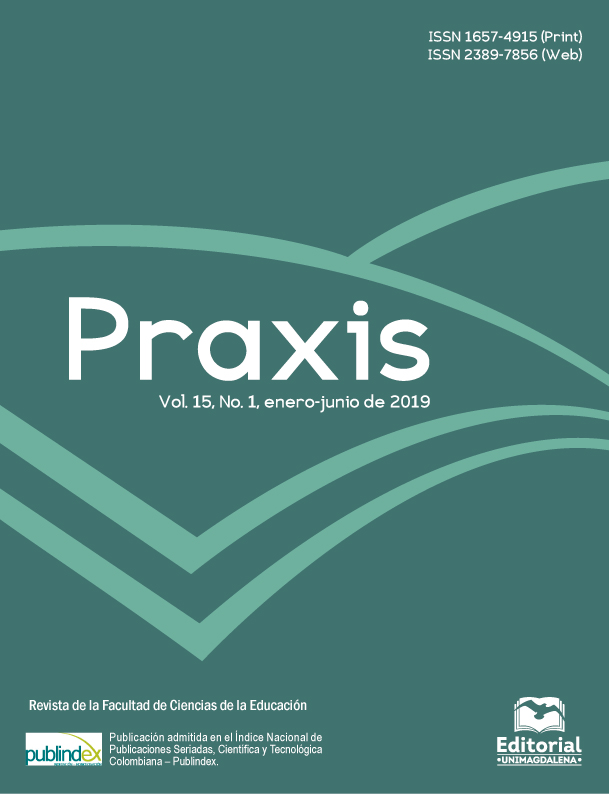La motivación en la enseñanza y el aprendizaje de la pronunciación de lengua extranjera en educación primaria
Contenido principal del artículo
Resumen
Descargas
Detalles del artículo
Citas
Baran-Łucarz, M. (2013). Phonetics Learning Anxiety - Results of a Preliminary Study. Research in Language, 11(1), 57-79.
Baran-Łucarz, M. (2017). FL Pronunciation Anxiety and Motivation: Results of a Mixed-Method Study. En E. Piechurska-Kuciel, E. Szymanska-Czaplak y M. Szyszka (Eds.), At the Crossroads: Challenges of Foreign Language Learning (pp. 107-133). Berlin: Springer International Publishing.
Bartolí Rigol, M. (2005). La pronunciación en la clase de lenguas extranjeras. PHONICA, 1, 1-27.
Blondin, C., Candelier, M., Edelenbos, P., Johnstone, R., Kubanek-German, A. y Taeschner, T. (2000). Foreign Languages in Primary and Pre-School Education: Contexts and Outcomes. London: CILT Publications.
Bruner, J. S. (1974). Toward a Theory of Instruction (2da Ed.). Boston: Harvard University Press.
Cameron, L. (2003). Challenges for ELT from the Expansion in Teaching Children. ELT Journal2, 57(2), 105-112.
Dalton-Puffer, C., Kaltenboeck, G. y Smit, U. (1997). Learner Attitudes and L2 Pronunciation in Austria. World Englishes, 16(1), 115-128.
Dalton, C. y Seidlhofer, B. (1994). Pronunciation. Oxford: Oxford University Press.
Dörnyei, Z. (2004). Motivation and Motivating in the Foreign Language Classroom. Modern Language Journal, 78(3), 273-284.
Dörnyei, Z. (2003). Attitudes, Orientations, and Motivations in Language Learning: Advances in Theory, Research, and Applications. Language Learning, 53(s1), 3-32.
Dörnyei, Z. (2001). Motivational Strategies in the Language Classroom. Cambridge: Cambridge University Press.
Dörnyei, Z. (1998). Motivation in Second and Foreign Language Learning. Language Teaching, 31(3), 117-135.
Dörnyei, Z. y Malderez, A. (1997). Group Dynamics and Foreign Language Teaching. System, 25(1), 65-81.
Dörnyei, Z. y Ottó, I. (1998). Motivation in Action: a Process Model of L2 Motivation. Working Papers in Applied Linguistics, 4, 43-69.
Dörnyei, Z. y Ushioda, E. (2011). Teaching and Researching: Motivation. (2da Ed.). London: Pearson Education.
Eccles, J. S. y Harold, R. D. (1996). Family Involvement in Children’s and Adolescents’ Schooling. En A. Booth y J. F. Dunn (Eds.), Family–school links: How do they Affect Educational Outcomes? (pp. 3-34). Hillsdale, NJ: Lawrence Erlbaum Associates, Inc.
Flege, J. E. (1999). Age of Learning and Second Language Speech. En D. Birdsong (Ed.), Second Language Acquisition and the Critical Period Hypothesis (pp. 101-132). Mahwah, NJ: Erlbaum.
Gardner, R. C. (1973). Attitudes and Motivation: Their Role in Second Language Acquisition. En J. W. Oller y J. C. Richards (Eds.), Focus on the Learner: Pragmatic Perspectives for the Language Teacher (pp. 235-246). Rowley, MA: Newbury House.
Gardner, R. C., Day, J. B. y MacIntyre, P. D. (1992). Integrative Motivation, Induced Anxiety, and Language Learning in a Controlled Environment. Studies in Second Language Acquisition, 14(2), 197-214.
Hepworth-Berger, E. y Riojas-Cortez, M. (2011). Parents as Partners in Education: Families and Schools Working Together (8a Ed.). Upper Saddle River, NJ: Pearson.
Jenkins, J. (2004). Research in Teaching Pronunciation and Intonation. Annual Review of Applied Linguistics, 24, 109-125.
Jenkins, J. (2002). A Sociolinguistically Based, Empirically Researched Pronunciation Syllabus for English as an International Language. Applied Linguistics, 23(1), 83-103.
Jenkins, J. (2000). The Phonology of English as an International Language. Oxford: Oxford University Press.
Jones, R. (2002). Beyond “Listen and Repeat”: Pronunciation Teaching Materials and Theories of Second Language Acquisition. En J. C. Richards y W. A. Renandya (Eds.), Methodology in Language Teaching: An Anthology of Current Practice (pp. 178-187). Cambridge: Cambridge University Press.
Kelly, G. (2000). How to Teach Pronunciation. Harlow: Longman.
Kenworthy, J. (1987). Teaching English Pronunciation. Harlow: Longman.
Lenneberg, E. (1967). Biological Foundations of Language. Hoboken, NJ: Wiley.
Liberman, I. Y., Shankweiler, D., Fischer, F. W. y Carter, B. (1974). Explicit Syllable and Phoneme Segmentation in the Young Child. Journal of Experimental Child Psychology, 18, 201-212.
MacCarthy, P. (1978). The Teaching of Pronunciation. Cambridge: Cambridge University Press.
Morgan, B. (1997). Identity and Intonation: Linking Dynamic Processes in an ESL Classroom. TESOL Quarterly, 31(3), 431-450.
Morley, J. (1991). The Pronunciation Component of Teaching English to Speakers of Other Languages. TESOL Quarterly, 25(3), 481-520.
Moyer, A. (2004). Age, Accent and Experience in Second Language Acquisition: An Integrated Approach to Critical Period Inquiry. Clevedon, England: Multilingual Matters.
Noels, K. A., Pelletier, L. G., Clément, R. y Vallerand, R. J. (2003). Why Are You Learning a Second Language? Motivational Orientations and Self-Determination Theory. Language Learning, 53(supp1), 33-63.
Norton, B. (1997). Language, Identity, and the Ownership of English. TESOL Quarterly, 31(3), 409-429.
Oxford, R. y Shearin, J. (1996). Language Learning Motivation in a New Key. En R. Oxford (Ed.), Language Learning Motivation: Pathways to the New Century (pp. 121-144). Honolulu: University of Hawai’i, Second Language Teaching and Curriculum Center.
Piaget, J. (1972). The Psychology of the Child (2da Ed.). New York: Ingram Publisher.
Pollard, A. y Tann, S. (1993). Reflective Teaching in the Primary School (2nd ed.). London & New York: Continuum Intl Pub Group.
Scott-Jones, D. (1995). Parent-child Interactions and School Achievement. En B. A. Ryan, G. R. Adams, T. P. Gullotta, R. P. Weissberg y R. L. Hampton (Eds.), The Family-School Connection: Theory, Research and Practice (Vol. 2) (pp. 75-107). Thousand Oaks, CA: Sage Publications.
Tremblay, P. F. y Gardner, R. C. (1995). Expanding the Motivation Construct in Language Learning. The Modern Language Journal, 79(4), 505-518.
Vygotsky, L. S. (1978). Mind in Society: The Development of Higher Psychological Processes. Cambridge, MA: Harvard University Press.
Williams, M. y Burden, R. L. (1997). Psychology for Language Teachers: a Social Constructivist Approach. Cambridge: Cambridge University Press.
Wood, D. (1998). How Children Think and Learn (2da Ed.). Oxford: Wiley-Blackwell.

